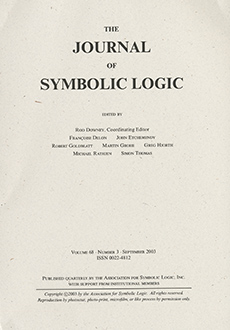Abstract
In [3], two different effective versions of Borel embedding are defined. The first, called computable embedding, is based on uniform enumeration reducibility, while the second, called Turing computable embedding, is based on uniform Turing reducibility. While [3] focused mainly on computable embeddings, the present paper considers Turing computable embeddings. Although the two notions are not equivalent, we can show that they behave alike on the mathematically interesting classes chosen for investigation in [3]. We give a “Pull-back Theorem”, saying that if Φ is a Turing computable embedding of K into K’, then for any computable infinitary sentence φ in the language of K’, we can find a computable infinitary sentence φ* in the language of K such that for all 𝒜∈ K, 𝒜⊨φ* iff Φ(𝒜)⊨φ, and φ* has the same “complexity” as φ (i.e., if φ is computable Σα, or computable Πα, for α ≥ 1, then so is φ*). The Pull-back Theorem is useful in proving non-embeddability, and it has other applications as well.
Citation
Julia F. Knight. Sara Miller. M. Vanden Boom. "Turing computable embeddings." J. Symbolic Logic 72 (3) 901 - 918, September 2007. https://doi.org/10.2178/jsl/1191333847
Information





